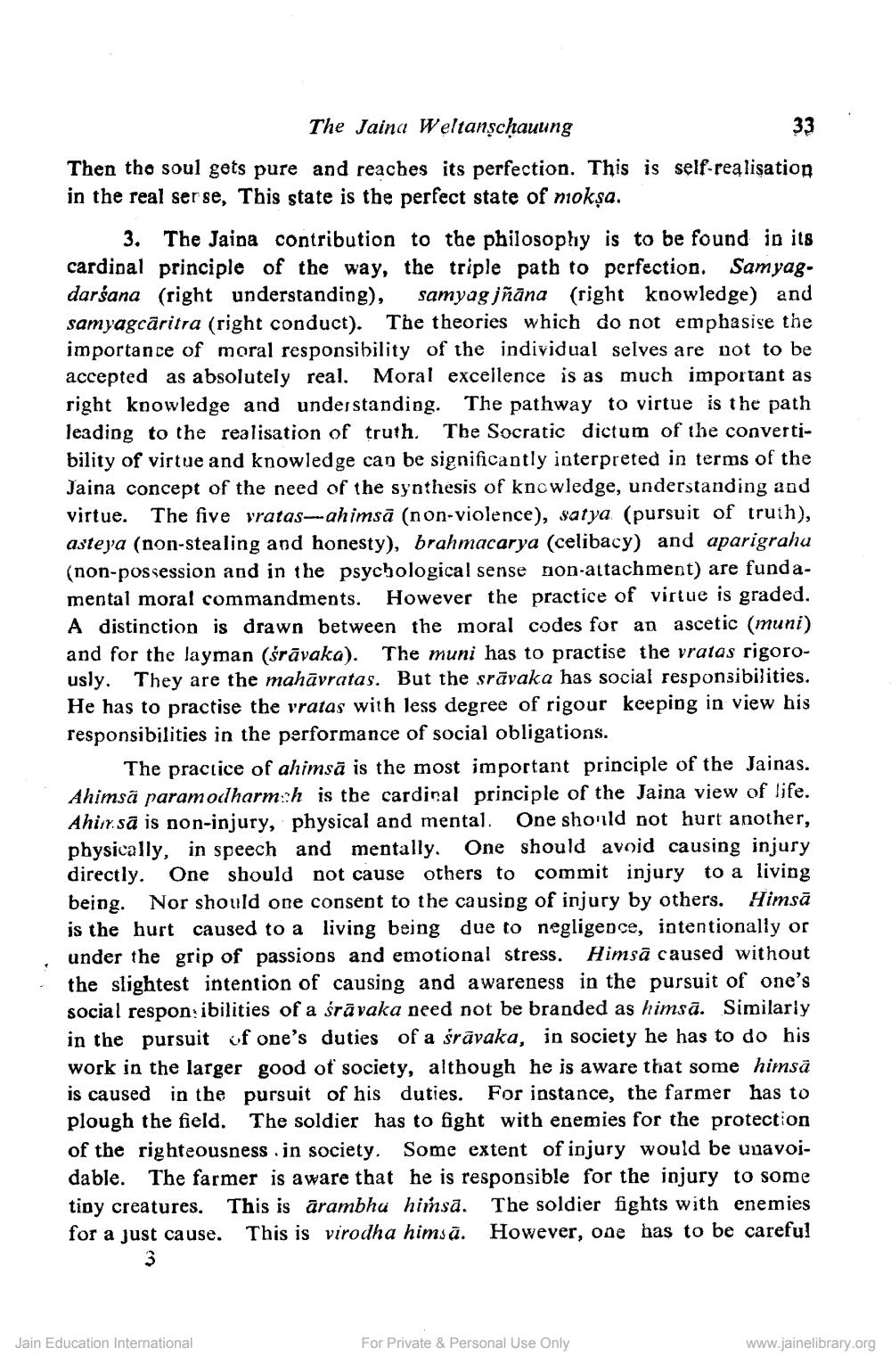________________
The Jaina Weltanschauung
33 Then the soul gets pure and reaches its perfection. This is self-realisation in the real ser se, This state is the perfect state of miokşa.
3. The Jaina contribution to the philosophy is to be found in its cardinal principle of the way, the triple path to perfection. Samyagdarśana (right understanding), samyag jñāna (right knowledge) and samyagcäritra (right conduct). The theories which do not emphasise the importance of moral responsibility of the individual selves are not to be accepted as absolutely real. Moral excellence is as much important as right knowledge and understanding. The pathway to virtue is the path leading to the realisation of truth. The Socratic dictum of the convertibility of virtue and knowledge can be significantly interpreted in terms of the Jaina concept of the need of the synthesis of knowledge, understanding and virtue. The five vratas- ahimsā (non-violence), satya (pursuit of truth), asteya (non-stealing and honesty), brahmacarya (celibacy) and aparigrahu (non-possession and in the psychological sense non-attachment) are fundamental moral commandments. However the practice of virtue is graded. A distinction is drawn between the moral codes for an ascetic (muni) and for the layman (šrāvaka). The muni has to practise the vratas rigorously. They are the mahāvratas. But the srāvaka has social responsibilities. He has to practise the vratas with less degree of rigour keeping in view his responsibilities in the performance of social obligations.
The practice of ahimsā is the most important principle of the Jainas. Ahimsä paramodharm:h is the cardiral principle of the Jaina view of life. Ahirr.sā is non-injury, physical and mental. One sho'ild not hurt another, physically, in speech and mentally. One should avoid causing injury directly. One should not cause others to commit injury to a living being. Nor should one consent to the causing of injury by others. Himsā is the hurt caused to a living being due to negligence, intentionally or under the grip of passions and emotional stress. Himsā caused without the slightest intention of causing and awareness in the pursuit of one's social responsibilities of a śrāvaka need not be branded as himsa. Similarly in the pursuit of one's duties of a śrävaka, in society he has to do his work in the larger good of society, although he is aware that some himsā is caused in the pursuit of his duties. For instance, the farmer has to plough the field. The soldier has to fight with enemies for the protection of the righteousness . in society. Some extent of injury would be unavoidable. The farmer is aware that he is responsible for the injury to some tiny creatures. This is ārambhu hinsă. The soldier fights with enemies for a just cause. This is virodha himsā. However, one has to be careful
Jain Education International
For Private & Personal Use Only
www.jainelibrary.org




